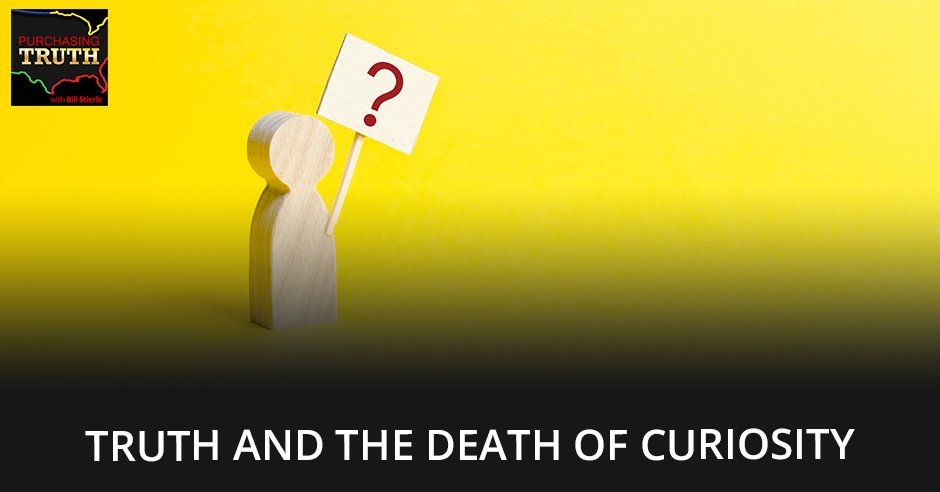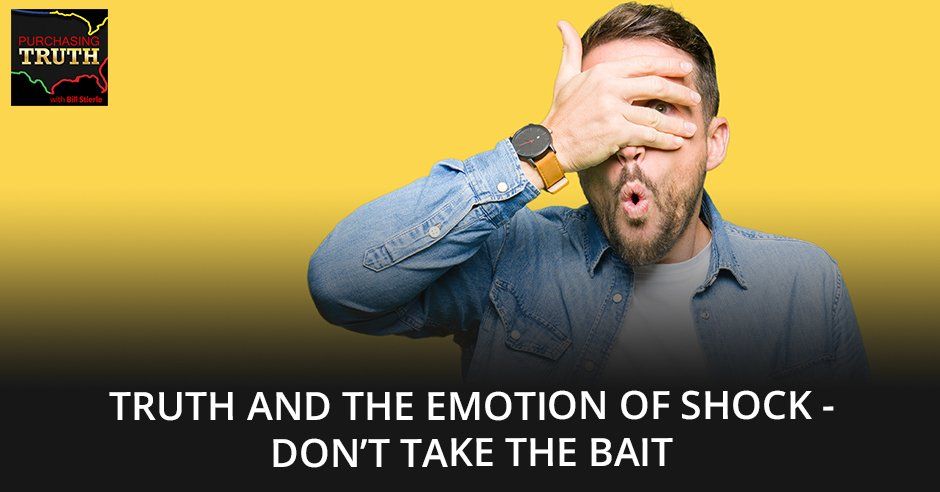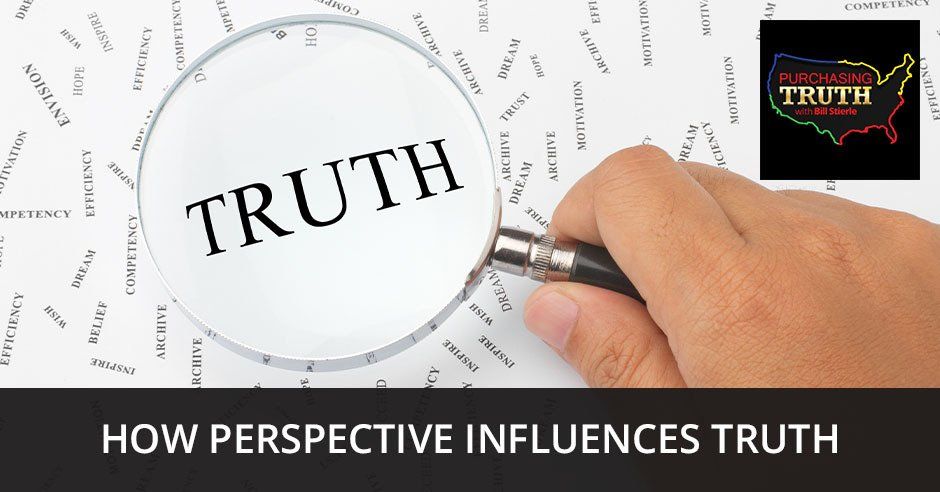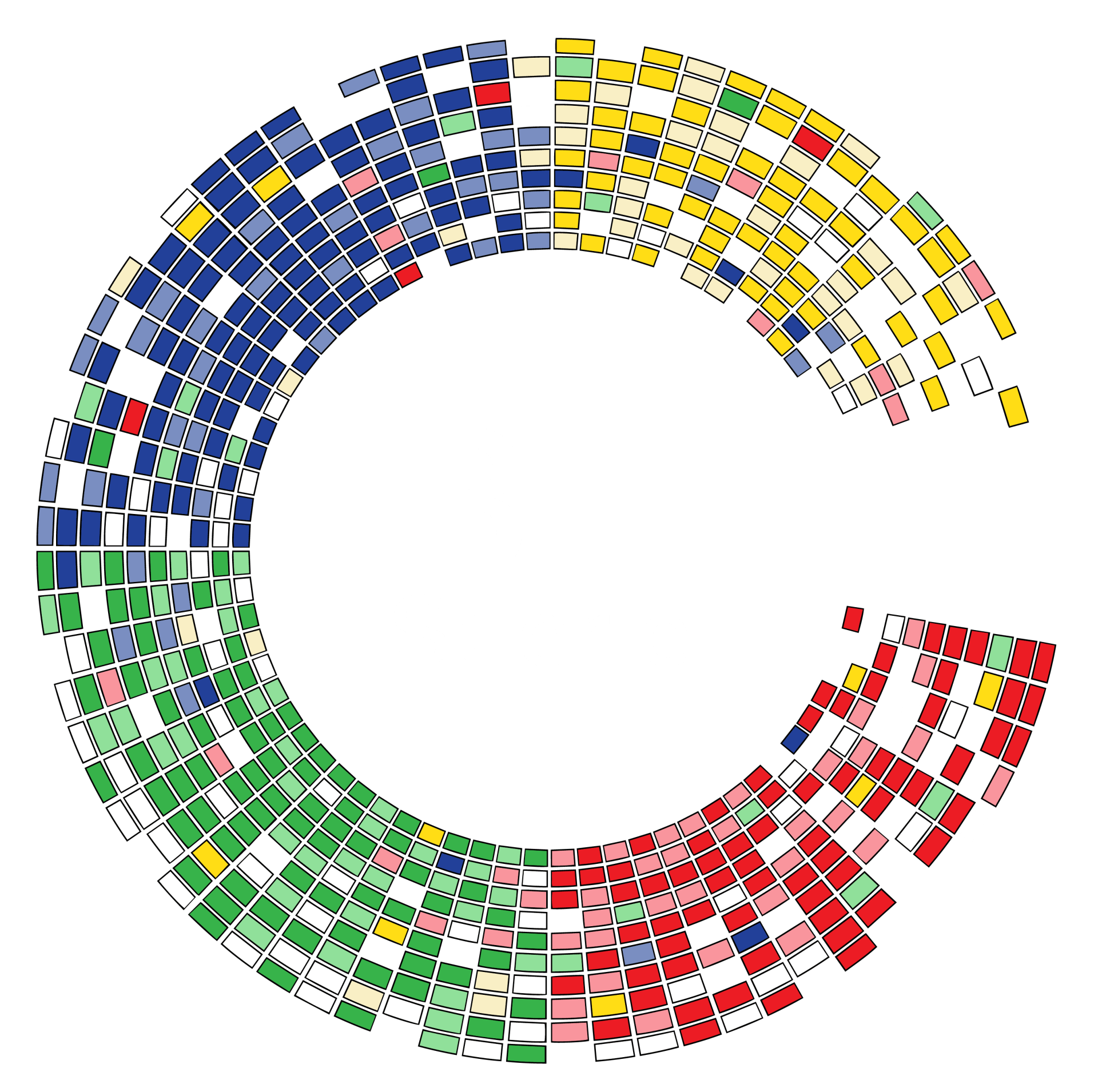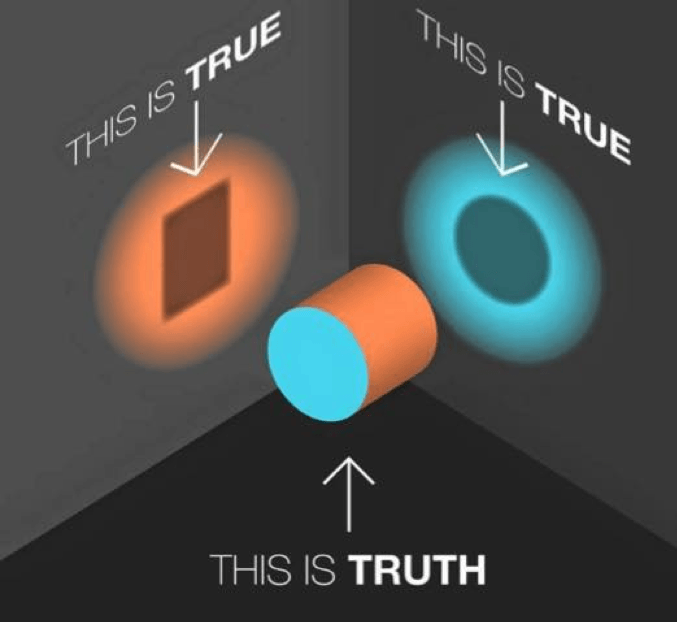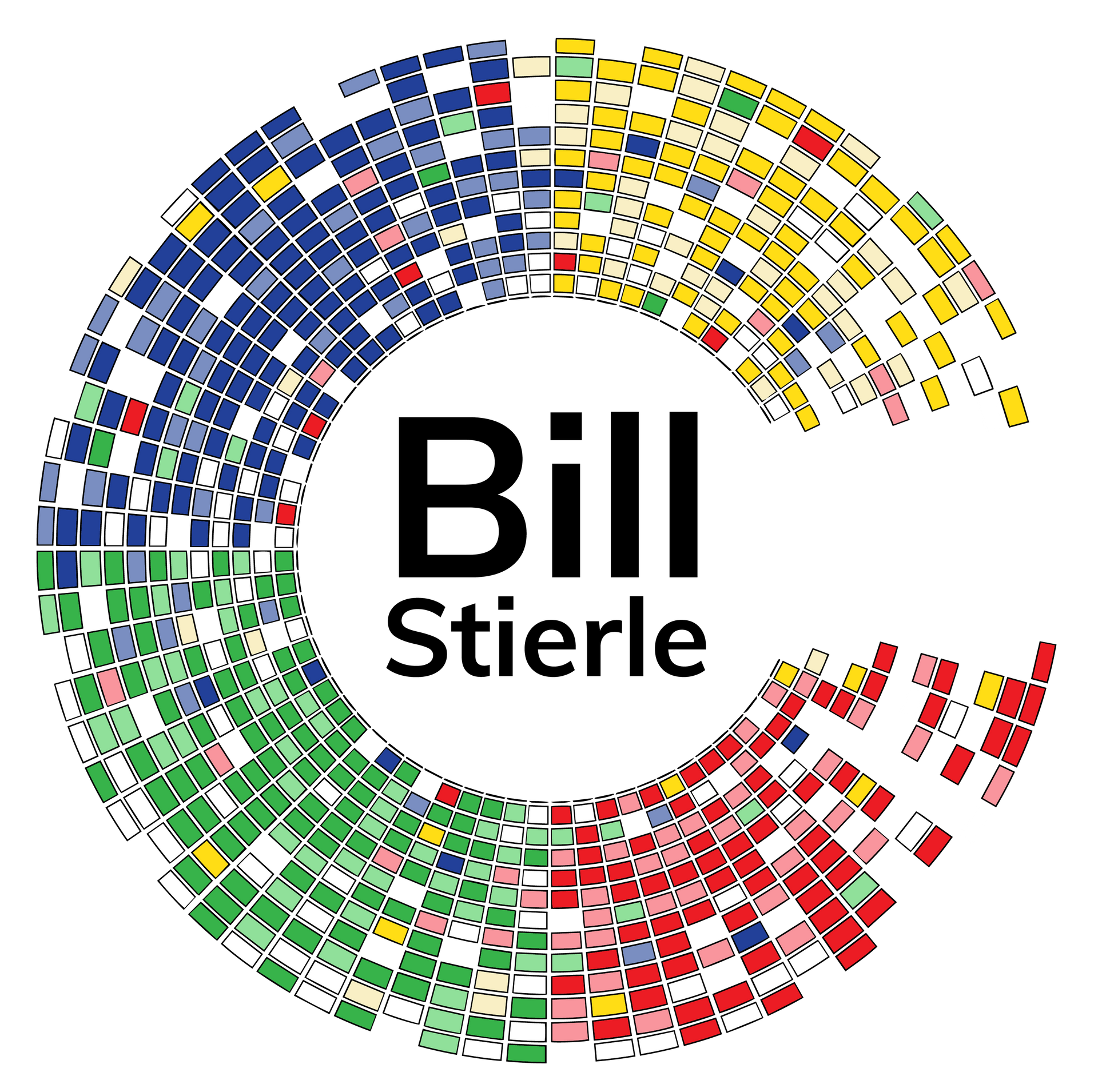Clarifying Our Perception, Perspective And Proportion
Subscribe Today!
In recent episodes, we have been breaking down the Three Ps of Purchasing Truth. Today, Bill Stierle and Tom dive deeper into perception, perspective, and proportion. They intently discuss each and how it all relates to influencing the truth. With a visual representation of how perspective can alter the truth, they help guide you through more tricks on how to elevate what is true. They then use the concept of the cylinder to show how proportionality can be amplified in an untrue manner. Bill and Tom share more about the Three Ps, including how the NRA illuminates their perspectives to the way they want people to see.
---
Watch the episode here:
I’m excited to talk about something that we touched on briefly last time and it deserves its own, which is why we’re talking about it now. That is clarifying these Three Ps of Purchasing Truth and that is Perception, Perspective and Proportion. Bill, can you help take us on this journey?
Tom, thanks a lot for setting this up. The delightful part of engaging these three words, perception, perspective and proportion is watching how messaging comes in and hits our brain. A lot of times the person is saying a narrative to claim space from one of those three positions. They’re not interested in winning the battle. They’re not interested in speaking what the truth is. What they’re interested in doing is occupying the space to reinforce a belief or a person that this is the best way to go. Somebody that puts a talking point into the media is not interested in activating or advocating for truth. What they’re doing is trying to cloud the environment with a partial truth, so it starts accumulating or occupying space. When it does that, it affects everybody else’s discussion because now you’re fighting for space in someone else’s brain.
Is that where the cliché sucking all the oxygen out of the room might’ve come, from that experience?
I appreciate that phrase. I didn’t think about that before because when the experience of sucking the energy out of the room is, “I’m going to occupy all the energy based on these words and phrases.” Purchase truth because my message is stronger. My experience is presumed to be more valuable because of the statue of the person I am because I happened to be on TV. It’s on TV, so that gives a great amount of credibility to somebody because somebody approved for that person to be on TV. The only problem is the gatekeeper might not be a good gatekeeper. It might not be a gatekeeper for truth. It’s a gatekeeper on how to get revenue. It’s how I can score points to get dollars to get viewers? That’s the new gatekeeper. The new gatekeeper isn’t the gatekeeper of truth.
I believe that and I agree with you. I think that the current government administration resembles that because the president rode his celebrity to the White House. His position on television gave him status in America. We mentioned in the past episode that celebrities are America’s royalty and royalty can be regarded as right or wrong as leaders or people of importance.
Somebody gave them the approval to be the Spiderman. It doesn’t mean they have a great deal of wisdom, knowledge and experience. It means that they have exposure. Exposure can eclipse wisdom, knowledge and experience. It can and it does.
That would seem to be way out of proportion. I was almost going to say the truth, but I don’t think that’s a proper choice of words.
It is true but not the truth. A big challenge has to do with this perception, which has to do with a person’s beliefs, their experiences and then what they can see. Those are three tenets of perception. A couple of other ways to think about perception is, what am I seeing? This is my experience and this is my belief, which is a coded message that I’ve been reinforcing for a long time. The belief doesn’t have to be true. It has to be something that had been reinforced. Beliefs are important for us and what they’re doing and get they’re creating certainty in the world. They don’t have to be true, but they have certainty to it. That’s what a belief does. Perspective is a little wider. It has to do with opinion.
My education and my knowledge influence how wide I’m thinking about it. Whereas if my perception expands, then I have to consider that the world isn’t as black and as white as I would like it to be or in perspective and certainty as I’m moving my hands in and out here. Perspective is wider. Certainty is more narrow. I have some certainty about the safety in my neighborhood, but if I go onto my neighborhood watch and look at all the different activities that are happening in my neighborhood, that could be scary. I’d rather not look. My perspective and my perception say, “Right where it is that my neighborhood is safe, it’s doesn’t have any malicious activity happening in it,” meanwhile, three blocks down or whatever.
I forget what the website is, but this is one where you can look up anybody that has to be registered because of the sex offender registry. It will give you certainty as to who’s in your neighborhood but I think a lot of people don’t want that perspective. It’s pretty scary.
I rather hold the perception that my neighborhood is safe, that the value of my house is X. The perspective is this is what is happening in my neighborhood that’s influencing the value of my house. This is influencing my neighborhood. Why people move here and why people don’t? Proportion is what news media can play with. How big do I want to make this thing that took place and how small would I like to make this big thing look from a proportion standpoint? If we take a slogan, that person made a mountain out of a molehill. A molehill’s big, a mountain is huge. They’re messing with proportion. You could see a media lately, “This thing started like a mountain, but it was a mouse.” The metaphors not particularly clean, but it is unique and it is new.
All of a sudden, it’s a very simple image that a person that believes that this person is because they’re in charge and because they have money, they must know more than I do. That’s not what is happening. What’s happening is the person is occupying space to reinforce a belief. It’s a reinforcing message because I already place my bet on this horse. I’m not moving my bet because that was my perception based on the things I heard at the beginning and the things I think about this person. I’ve had a lot of investment in this person being successful. What? You’re telling me that he’s not successful? How does that equate? I’ve been spending years watching him fire people.
This brings up a serious question in my mind, Bill, I wonder if it does with a lot of our readers, too, and that is, is it that hard for people on the hole to change their beliefs, to take in new information and change their position? If he was their guy, they voted for him. They want to feel like they voted for the right guy. Maybe there’s some disillusionment and their perspective changes. They see that what they thought was true isn’t true. He was a very successful businessman. He’s made lots of money, so he’d be great to run the country and then you’ll learn, he didn’t make all that much money. He lost over $1 billion in ten years and paid no taxes to our government. When does he’s my guy give way to, “I was deceived or I see things differently now?”
Whether it’s Jim Jones, who is a cult leader or the famous Manson, Charles Manson, those believers still struggle with how they invested in this person that turned out to be so dark and evil. They still struggle with it. You can ask them. You could do an interview.
It’s a little struggle because what they did was invest in truth. They invested in that. This person is speaking with conviction. I have a diagram that can be helpful to look at how the truth gets purchased and hijacked. The way the light is shining, the way the direction the person is looking and is seeing a true thing. Someone can indeed have a Jewish, a Christian, a Muslim belief and they’re looking at the world this way. Another religion is looking at it this way and both of them have a truth to it, even though they’re getting it too in a different way. The only challenge is that when those beliefs are written in a black and white or on the person that is to enforce this belief, that’s when the trouble gets started. It is because my truth is correct and I’m going to fight or enforce it. This is why religions sit in the space they do and the government is looking to be separate from that.
I don’t want that stuff in this stuff because this stuff is a standard that we’re all following. This stuff is a standard that you can choose to follow because it’s a true belief for you. It’s not the truth. The truth that’s written in this book, therefore eye for an eye or to stone people is okay for a group of people to do. That is not the greater truth. That is a truth in that book, but it’s not the greater truth. The greater truth is here’s the way we are choosing to talk through and litigate through a law. That’s what the truth is. What happens then is when a person says, “It’s true that there was a mountain that was a mouse,” the person that’s been seeing that direction is still seeing the square where if you’re reading the document, you see the circle. You’re going, “I don’t think that’s true.”
This helps you understand visually and maybe all of you reading this are understanding conceptually but it is a fantastic visual representation of how perspective alters your truth or what is true to you. That’s illuminating to me and at the same time, it’s a little frustrating to me because I, even having worked with you for a few years, Bill, I thought there is actually a truth. Much like you hear the news media commentators on the evening news who are doing fact-checking. That’s how they try to combat these perceptions and beliefs, which maybe is not the best way to do it. I remember I checked out on Meet the Press interviewing Rudy Giuliani.
At some point in this, Rudy Giuliani is saying one thing that’s his truth or that he believes and Chuck Todd’s saying another. At one point, Rudy says, “Truth isn’t the truth.” Chuck Todd threw his hands up in the air and starts laughing, says, “Are you kidding me? Truth isn’t truth? This is going to become a meme,” he said. It may still become a meme, but I at the time thought Rudy Giuliani was way off base, the truth isn’t truth. Now you’re giving me a different perspective that maybe the truth isn’t truth is a little, not how I would say it, but certainly that there are different truths for the same thing.
If one person is talking about the square version of the truth and the other person is talking about the circle version of the truth, they’re not looking at what is true or the full truth. The full truth is there’s a cylinder there. Notice even, I’m bringing it to your attention and you’re going like, “I was looking at the reflection the whole time.” Tom, people keep looking at the reflection and arguing about the reflection. They’re not arguing about the primary issue. The primary issue is there is a cylinder in the middle and the cylinder in the middle is saying, “The amount of money we’re paying for healthcare is not at the value that we are getting.” We’re not getting the value out of the money we’re paying. That’s the cylinder. Let’s talk about the cylinder. Don’t talk about Obamacare or a private insurance issue is the way to go. The value is problematic. Some people are getting paid money for low valued service and delivery.
Many things are running through my mind right now, Bill. This is fantastic.
It’s fantastic and annoying both at the same time. My emotions are going to go up instantly. Irritated, aggravated, annoyed, frustrated, and angry if you want to choose to do that if you want to judge it, but the truth is to look at the darn cylinder. The cylinder is sitting there. The cylinder is the tax system does not meet the need for fairness across the board. The cylinder is. This is what fairness would look like. If a secretary is paying 35% and a conman, that’s the judgmental word, but a person that is paying zero in taxes because they’re a millionaire, a billionaire, that’s problematic. I’m not saying that the proportionality, now we’re back to the word proportion, is that there can’t be something closer to talking about what the cylinder needs, what we need to do with the cylinder.
If I’m flying into an airport in the United States and I’m flying into the airport in Asia, I can see that they place more value in infrastructure than we do because of how beautiful their airport is. I could pick an airport in Asia that looks gorgeous and beautiful in comparison to our airports. We’re not getting the value out of it. Some people are getting extraordinary value because they’re sitting at the top while everybody else is slugging it out at the bottom. I’m not saying other countries don’t have a whole other set of problems about human rights and belief structures that they get stuck in. I’m not saying change systems. I’m saying talk about the cylinder. That’s the cylinder there.
This is even further illuminating. The one thing you said a while back is the whole truth, is that the distinction here, that a lot of people purchase truths, but while through a number of different techniques that we have talked about in past and we’re going to continue to talk about, but they talk about a partial truth. That it may be there a certain perspective gives that partial truth. Maybe it’s a proportional difference that’s a partial truth. I hope this is true, but is there always a whole truth that if you do look at it from all perspectives, if you illuminate the cylinder, if you actually talk about the cylinder and not the projection on the wall, the shadow or the reflection, is there a whole truth or is it still always shades of gray?
The bad news is there’s not a whole truth because we are learning, growing, changing, developing, researching and the truth is changing. In the past, they talked about oil. In the 1970s, the oil reserves were running out. The experts said the oil reserves are running out. Therefore, Jimmy Carter says, “We need to slow down our gas mileage, so we’re going to change our speed limit from 60 miles an hour to 55 miles an hour.” What the experts are telling us that this is the only amount of oil that’s left. Meanwhile, within literally five or ten years of that, the oil company figured out how to drill deeper. They figured out how to do horizontal drilling.
The experts said, “We didn’t know you’re going to do that, now we have this many years.” All of a sudden, the truth changed. The cylinder changed. You’ve got to remember to keep talking about the cylinder. Don’t talk about the projection. Don’t talk about the square as much. Don’t talk about the circle. If you talk about the circle or talk about the square, you’ve got to come back to what the cylinder is. What’s the value? How can we get closer to the cylinder? What’s the closest cylinder that we have? Can we do a little more research? Have we done enough research to make a decision that’s going to last us for five or ten years until we want to revisit this? This is the best we’ve got.
If I’m looking at Medi-Cal and Medicare as the cylinder issue, I would say, “This is where the numbers are right now regarding its viability as an insurance program.” There’s no handout. There’s no entitlement. I’m looking at the cylinder. Handout is a person projecting judgment trying to create a truth around entitlement. There’s no entitlement. This is insurance. This is a low-cost medical insurance and system to keep people propped up so they’re not ending life earlier than they need to or that they just have some simple safety net. That’s all it is. It’s not very much at all.
I started arguing for the square by the way, where the circle is going to be the entitlement conversation and the square is a safety net value piece. What’s the centerpiece is, how do we keep this system viable and how do we remember what we’re talking about? How to provide health and safety and respect for people that have come before us? Allow them to have a fuller life experience rather than dying earlier because they’re destitute and they have no resources to get there and no ability to work their way to create value because they had their value early in the world. Do you see how all of a sudden talking about the cylinder makes it a more of an adult conversation?
It does. Honestly, if everybody would talk about the cylinder, it would be a much more productive conversation, wouldn’t it?
Somebody that puts a talking point into the media is not interested in activating or advocating for truth.
CLICK TO TWEET
Yeah, it does. It becomes much more productive. Stay on the cylinder. Stop populating the environment with the projection. Some news shows focus on the projection and they’re calling themselves a news show. If they called themselves an opinion show, then what will wind up happening is they wouldn’t have the perception and the perception of them having more weight so they can tip the scale. This is why interviewers get into a little bit of trouble because they got to be careful that their opinion is not tipping the scale, when they ask the person a question that the person is talking about the cylinder. What has happened over the last many years, in a very saturated way, is that the newscaster will ask a question and the person will not even answer the question. They’ll start talking about the illusion and not even answer the question. They start talking about the projection, ignoring the question and distracting.
A skilled interviewee who’s trying to send a message or continue to tow the party line, whatever their cause is, will pivot immediately from what the question that’s being asked to them into what they want to talk about.
All of a sudden it’s, “I want to talk about the cylinder.” If you take the cylinder and everybody was trying to say, “The Mueller Report’s going to be the cylinder.” What happened was, is all the way up to that Mueller report, the projection was talked about and media is very clear about this. “It’s proposed. We’re not certain, let’s see how this is going to be. This could mean that.” That’s an illusionary talk. What they’re doing is they’re saying, “This could be true.” When somebody gives a definitive sentence and then somebody talks about their version of true as a possibility, what winds up happening is the person that’s being definitive gets more credit, where the person that’s being allowing perception to have a place doesn’t get as much credibility.
When Donald Trump or anybody tweets, they’re putting a very specific, as I move my hand towards one projection, illumination of this is true. Then what happens is people take that and then do a thing called walk it back or amplify it. Walking it back is trying to minimalize the thing that’s being said. I’m walking it back. Amplifying it is I’m trying to proportionalize what is taking place. You can see, no one’s talking about the cylinder. What did the person say or do? Are we holding people accountable for what they say or do?
The only place now we’re holding people accountable for is under oath. If you’re under oath, the other side can still call you a liar because when you were not under oath, you told a lie over there. You get to lie when you’re not under oath.
They try and use you’re not under oath to attack your credibility when you are under oath.
That’s not the cylinder. The cylinder is you’re under oath. If we catch you not being in alignment about what was said or done or what the person’s motivation was, then what happens is that we get to use that against this. The purchasing of truth has to do with how much it gets us to number three in this list, the proportionality of it. The proportionality of is I get to amplify proportionality in an untrue way to promote my illusion or my projection of a circle or my projection of a square. I get to not talk about the cylinder. Are you feeling as upset as I am right now? I am sure upset and disturbed.
It is disturbing to have your truth bubble burst.
If I start talking about ice cream, Tom, if I start talking about how delicious your favorite ice cream is, and your favorite ice cream, you haven’t been getting that for a while. Those immigrants are taking your ice cream. All of a sudden you get my vote because I’m enjoying the projection that you are providing me. They’re not taking anybody’s job. They are bringing less crime than it is already here. That’s the cylinder or more of the cylinder. Bad people do some bad things and then you can’t proportionalize a bad person doing a bad thing. If the person has enough true projection, their true projection of what they’re amplifying a person’s into a belief structure.
Tom, is taking Bill Stierle’s pistachio ice cream away from him. To make America great again, I’ve got to keep Tom from taking Bill Stierle’s pistachio ice cream away from him. Can you see how weird this is getting as a conversation? The conflict between you and me, I’m making the conflict over ice cream. I am amplifying about how much Bill Stierle deserves pistachio ice cream rather than Tom taking this pistachio ice cream. In fact, because Tom is coming in, he’s depressing wages because now all of a sudden I can hire Tom and now Bill won’t get paid as much and he can’t have his pistachio ice cream.
Let me pick something else. Can you believe that a person on food stamps had enough money for a refrigerator? This is what they spent on. It’s like, “In the modern age, we would like them to have a refrigerator to do the crap job that they’ve signed up to do because they didn’t spend the time in education or skill-building or talent or wisdom just because this is where they like to play. They don’t want the level of complexity that some other people would like. They don’t want that. They don’t want beyond the rat race. They don’t want to get on it.
They go like, “I like my job. I like going out hunting and fishing. I like to do these kinds of things and I don’t need much more of an income. I don’t have to have that new Lexus or Audi or whatever that the media is throwing at me. I don’t have to be on a yacht. I was on a yacht once and that was enough. I don’t have to own it.” The cylinder has to do with looking at simple sentence, “All men are created equal.” Is that sentence true? No, but it’s a pretty damn good cylinder to look at. Look at the cylinder, “All men have inalienable rights.” Look at the cylinder. They have this thing in the cylinder, but complete freedom for gun use to everyone at the expense of others? I don’t know if I’d like that true sentence for that person. The truth is they’re meeting their needs at the expense of another person and they’re a little wacky and they aren’t working on a very solid day. I think that the cylinder is protection and safety. Are you going to stop everyone? No, but it’s important to look at the cylinder.
The NRA is as good as anybody at illuminating their perspective or their perspective they want people to see.
Yes. Marketing, promotion, branding, identity building and emphasizing the need for choice. It’s your right. It was what the founder intended for muskets so that people could hunt whenever wanted to. People get to defend their selves in their areas because we don’t want a fully centralized government. Regarding weapons, we don’t want that because then some people could take power over another person. I’m okay with some of those things because I’m looking at the cylinder but I’m not looking at the projection of what one person is advocating at the expense of others.
Bill, thinking back to the truth slide where you can get closer to the truth or get further away from the truth. Isn’t when you start pulling one of those levers more than the other or in a certain way, doesn’t that get us further away from the actual truth?
It does because what you’re doing is you’re not focusing on the thing called the observable. The observable and the full range of the observable, it’s to the best of a person’s ability to observe. If I’m looking and I’m keeping my eye observing this cylinder and I can see the circle on one side and I could see the circle projection and I could see the square projection. All of a sudden I’m bringing back to observation, then I do some evaluation and saying, “If I put the word gun on the cylinder and guns for people, how can I get both of these worldviews to be written into law so that I have something to work on from the cylinder place?” I’m not overcompensating for one person’s version of what’s true or another person’s version of what’s true.
Some people have such a version of the truth that guns are dangerous. That they don’t want to be anywhere near that gun because their worldview is this can end life or seriously damage my loved ones or me.
Their true viewpoint is, “I don’t want anybody to have guns, but the other person’s true version is, “I’ve had guns for years, my family had guns. We have a need for safety. We’ve done the things that are necessary to provide our family safety. From time to time, we go out both for recreational, for skill-building and practice on this thing or for hunting. It’s been a part of our family history to go out hunting. I remember hunting with my dad and sitting up in a blind and shooting a deer and how excited and energized he was at the skill that it took me to do that.” It’s fascinating but I can argue this. In our first episode, we’re talking about observation is being the closest you can be that’s talking to the cylinder and then evaluation, “I’m going to look at the two perspectives, then I’m going to make a judgment of those three things.”
I am not going to make a judgment that one of them is right and the other one is wrong. That’s what’s happening right now in our society. See how unsettling this is? Also, it’s an illumination piece. This is what that looks like. The next one after the judgment is criticism. That’s a person polluting one of these illusions. We got criticism and labels that are going to the project. We’re polluting one side of the perspective and calling that true. It is winning the battle of the vote and the real war is getting back to what the cylinders are. That’s where the war is. That’s where we’ve got to do a better job. In the past, we did pretty well, but at the same time some people didn’t like it so much and they tilted the scale in the other direction.
It seems like it’s a never-ending war to me. Maybe that’s a perpetual reality. Maybe it is always going to be a battle for getting to the cylinder, getting to what is truth because it’s so much easier and maybe even human nature to look at only partial truths for all these different things, beliefs and everything to be affected differently. That’s okay. This is why we’re talking about this, bringing greater understanding to it all.
There are so many wrongs in the world. What a proportional narrative makes it says this wrong is not a big deal. That’s called reducing the impact of it. The other side has to increase the impact then. If I want to also change the perspective, I can use the famous what about language? “What about this?” This thins out and reduces the value and the impact of the thing that was wrong. What about this? So and so did this, it’s as bad as this. It’s like, “No, it’s not,” because they’re just trying to thin out or reduce the value for the impact of a proportional narrative. The proportional narrative is trying to occupy space and time. It’s challenging. We’re trying to get things to work a little bit better with our truth and our truth perspectives.
That’s another very important understanding and tool in our toolbox of how-to, either depending on your purpose, purchase truth or keep others from purchasing truth.
The nice part about this is this gets us to the point where we can now have a good, solid discussion, observable about the cylinder. About how these three words are used and these three language structures are used to hijack the cylinder discussion. They are guilt, blame and shame. Those are the three. I’m now going to use a language of guilt, a language of blame and a language of shame to not talk about the cylinder. I am going to talk about the proportionality of what truth is. It gets us on this emotional gerbil wheel that then regrettably the messaging in America is designed to impact the reader only to confirm a belief and escalate their emotional experience. Not to talk about the truth in the cylinder of, “This thing isn’t working for us. Our infant death rate is way too high for the amount of medical stuff we know and have. Why is that? Let’s try that one on,” because that’s a cylinder discussion.
I like the idea of, especially when the truth is getting hijacked and there are a few people that do that better honestly than Donald Trump and he is running for president again. Every week there’s a new message. I’d liked the idea of us being able to use then these tools to identify what’s happening and to be able to put it into perspective. I’m hoping that some of the candidates will be reading this series and be able to learn a little bit about what they may be able to do to battle this.
Certainly in the 2016 election cycle, a few people could take him off message. It was just label and diagnosis.
A truth, a plan, a resume and an experience in the past, we’re not able to combat this very visceral dopamine response of how we would create anticipation and uncertainty and some of these other tactics that we talked about in the past.
He promised everybody pistachio ice cream. That’s what it was.
I know how to get pistachio ice cream because I can make it because I’m a billionaire. I’ve been there and I can make it. This is the success because look at where I am. Now, I have the confidence to run for president. All these doing is a bit of a language card trick, which is something you’ve got to call the person on and say, “I appreciate this point of view, but I’m not sure if that’s the direction or the foundation that America wants to stand on moving forward.” We’re not going to stand on this foundation because by the way, it’s a very shaky foundation because you can get hijacked on multiple levels. It’s getting your needs at the expense of everybody else’s needs. I don’t think we’re built on that. We’re not built that way. We’ve got to decide how we want to deal with this. We got to deal with the big three next, the guilt, the blame and the shame and get off the emotional gerbil wheel. That’s what I’m thinking.
I look forward to that one next time. Thank you, Bill.
Thanks, Tom.
Important Links:
Love the show? Subscribe, rate, review, and share!
